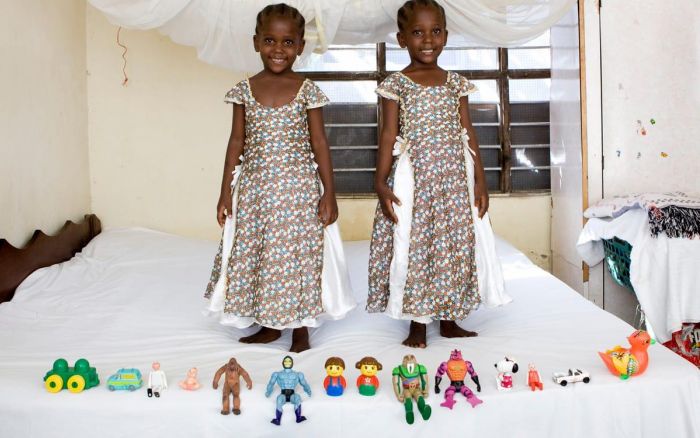Can We Learn From Kids and Their Toys?

Several weeks ago, my three-year-old began lugging around his most prized possessions — a pair of sunglasses, a toy airplane, and some bits of jewelry, among other things — everywhere he went. At first, it was all in a pouch that he filled nearly to the point of bursting, and now his “mess” (as he calls it rather accurately) resides in a plastic bin. The boy loves his stuff, and one of his favorite activities is carefully and methodically going through it all, organizing it into nice, neat piles, and making sure he knows where every little toy and trinket is.
The sight of my son sitting on the floor, patiently putting his treasures into piles organized by size, color, and other criteria known only to him, reminds me of Gabriele Galimberti’s “Toy Stories” photo series. Galimberti spent 18 months traveling the world and photographing children posing with their favorite toys. On the whole, the series is extremely charming: it’s easy to be won over by cute kids proudly posing with their earthly treasures, be they cars, dolls and stuffed animals, sunglasses, or musical instruments. (I’m particularly charmed by Arafa & Aisha, twin sisters from Zanzibar who count Skeletor and Chewbacca among their favorites.) Above all else, the photos are a good reminder that kids are kids, the world over, and everybody loves a good toy.
That said, it’s nigh impossible to not notice the disparity between the photos’ subjects when you compare photos of children from Texas and China with photos of children from, say, Malawi and Kenya. The former pose in pristine rooms surrounded by mountains of games and toys; the latter, in huts with a handful (if they’re fortunate) of battered playthings. It would be easy to try to make a grand statement about economic inequality or poverty, but Galimberti wisely resists the urge to politicize or over-dramatize his photos and their subjects. He simply presents the children “as is” in their environments, and allows readers to be drawn into the children’s worlds and come to their own conclusions.
Galimberti’s photos also, however subtly, point to the social and cultural forces shaping the children. For example, “the girl from an affluent Mumbai family loves Monopoly, because she likes the idea of building houses and hotels, while the boy from rural Mexico loves trucks, because he sees them rumbling through his village to the nearby sugar plantation every day.” The children’s toys can also reveal the various ways that parents tried to influence and shape their children. Seemingly trivial playthings are more than just mere toys.
Galimberti’s photos are a helpful reminder that I need to be thoughtful about the toys and other possessions that I give my children because I want them to be thoughtful about their material goods. There’s nothing inherently wrong with having lots of stuff (toys or otherwise), and there’s nothing inherently more righteous about having less. But the Bible makes it clear that material possessions do represent a danger — that owning too many things can cause us to become too fixated on the things of this world, and the temporary joys and comforts they can give us. (Indeed, Galimberti noted that kids with the most tended to be more possessive and protective whereas kids from poorer countries were more open, even when they had little.)
This entry was originally published on Christ and Pop Culture on .